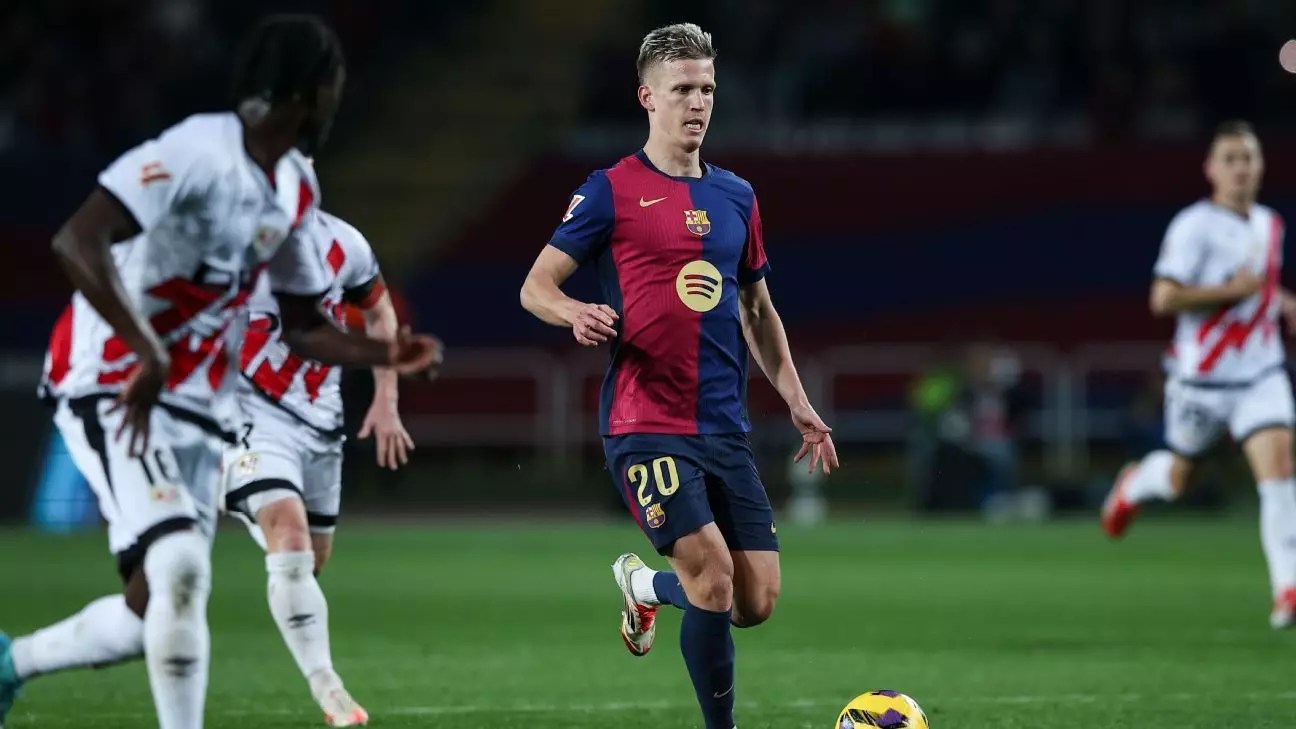Barcelona, grappling with significant financial challenges over the past few years, appears to be on the mend as LaLiga recently announced an uptick in the club’s spending cap to over €463 million (approximately $483.7 million). This increase of nearly €40 million marks a noteworthy recovery, especially when compared to the drastically reduced cap of €204 million just one year prior. The evolution of Barcelona’s financial limitations offers a unique insight into the factors driving the club’s resurgence and the ongoing challenges in achieving financial health.
The improvement in financial conditions is largely attributed to strategic financial maneuvers, notably the sale of 475 VIP seats at Spotify Camp Nou. These seats, which come with a contractual obligation for a maximum duration of 30 years, have attracted investment from two different Middle Eastern entities, summing up to an impressive total estimated at €100 million. Such deals not only provide immediate financial relief but also signal confidence in Barcelona’s long-term viability post-renovation.
While the increase in Barcelona’s spending cap is significant, it is essential to contextualize this within LaLiga’s broader financial ecosystem. Despite Barcelona’s enhanced cap—now the second highest in the league—Real Madrid leads with an astonishing €755 million. Following the giants are Atlético Madrid, Real Sociedad, and Villarreal, with comparatively smaller caps of €314 million, €160 million, and €135 million, respectively. This hierarchy highlights the financial disparity that exists within the league, where diligent financial management and successful sporting strategies translate into higher inequities in income distribution.
On a contrasting note, Sevilla’s drastically slashed cap—down to €684,000—illustrates the pitfalls of poor financial regulation and management. The stark contrast between Sevilla and Barcelona underscores the consequences that financial mismanagement can impose on clubs, further complicating competitiveness within LaLiga.
The spending cap serves as a crucial guideline determining how much clubs can allocate towards player wages, bonuses, and amortization payments for player transfers. The methodology behind calculating the cap relies largely on a club’s revenues matched against its non-sporting expenditures and ongoing debts. Hence, it is the claims that club earnings must outweigh expenditures that allow Barcelona to navigate their financial waters more flexibly now that they are within the prescribed limits.
For clubs operating above their caps, such as Sevilla, the restrictions in the transfer market are particularly severe, often relegating them to spending just a fraction of any potential savings or increased revenues. Barcelona, in contrast, has secured a favorable position: given that they are within their limits, the club is allowed to utilize 100% of any funds they save or raise, thanks to LaLiga’s 1:1 rule governing such financial dynamics.
Despite the positive financial trajectory, challenges still loom large over player registrations. The club faces an uncertain situation with the registrations of Dani Olmo and Pau Víctor. Following a missed deadline on December 31 to validate compliance with the spending cap, LaLiga ruled that the deals leading to the club’s recent financial windfall were invalid. This has placed the two players’ registrations in jeopardy, as RFEF regulations prohibit players from being registered more than once in a single season, irrespective of compliance checks.
Barcelona’s subsequent legal battles against LaLiga and RFEF decisions, bolstered by a favorable injunction from Spain’s sports ministry, highlight the complex interplay between regulations and financial maneuvering. The resolution of these disputes may take months, leaving questions surrounding squad depth and player selection hanging in the balance.
The increase in Barcelona’s spending cap signals a cautiously optimistic turn for the club’s financial stability. However, existing disparities within the league, the implications of the spending cap, and ongoing challenges regarding player registrations illustrate the multifaceted nature of financial management in football. As the landscape continues to evolve, Barcelona’s ability to navigate these intricacies will be critical to their sustained success on and off the pitch. Their journey not only highlights the importance of strategic partnerships but also underscores the pressing need for robust financial governance in the sports industry.


Leave a Reply